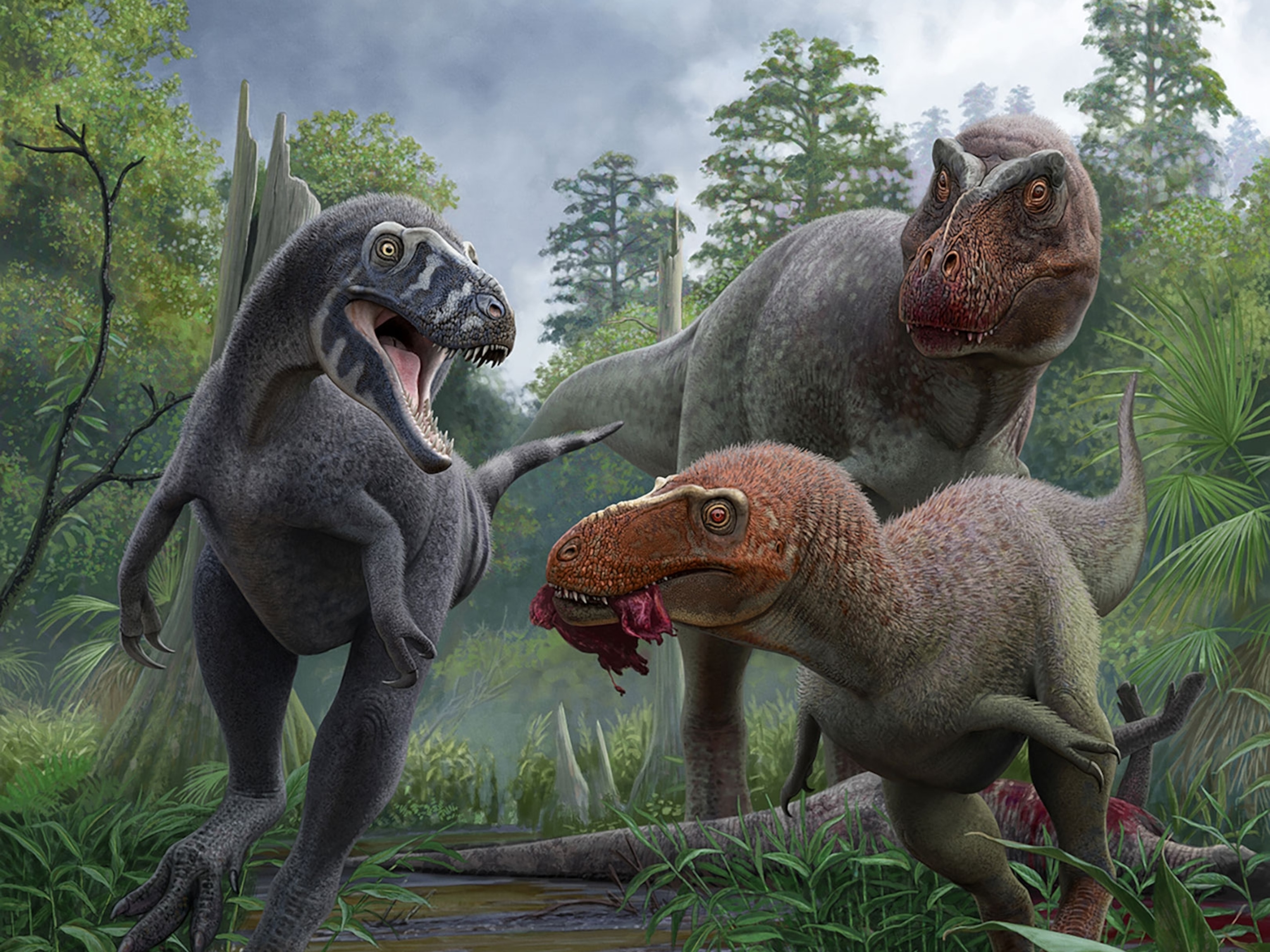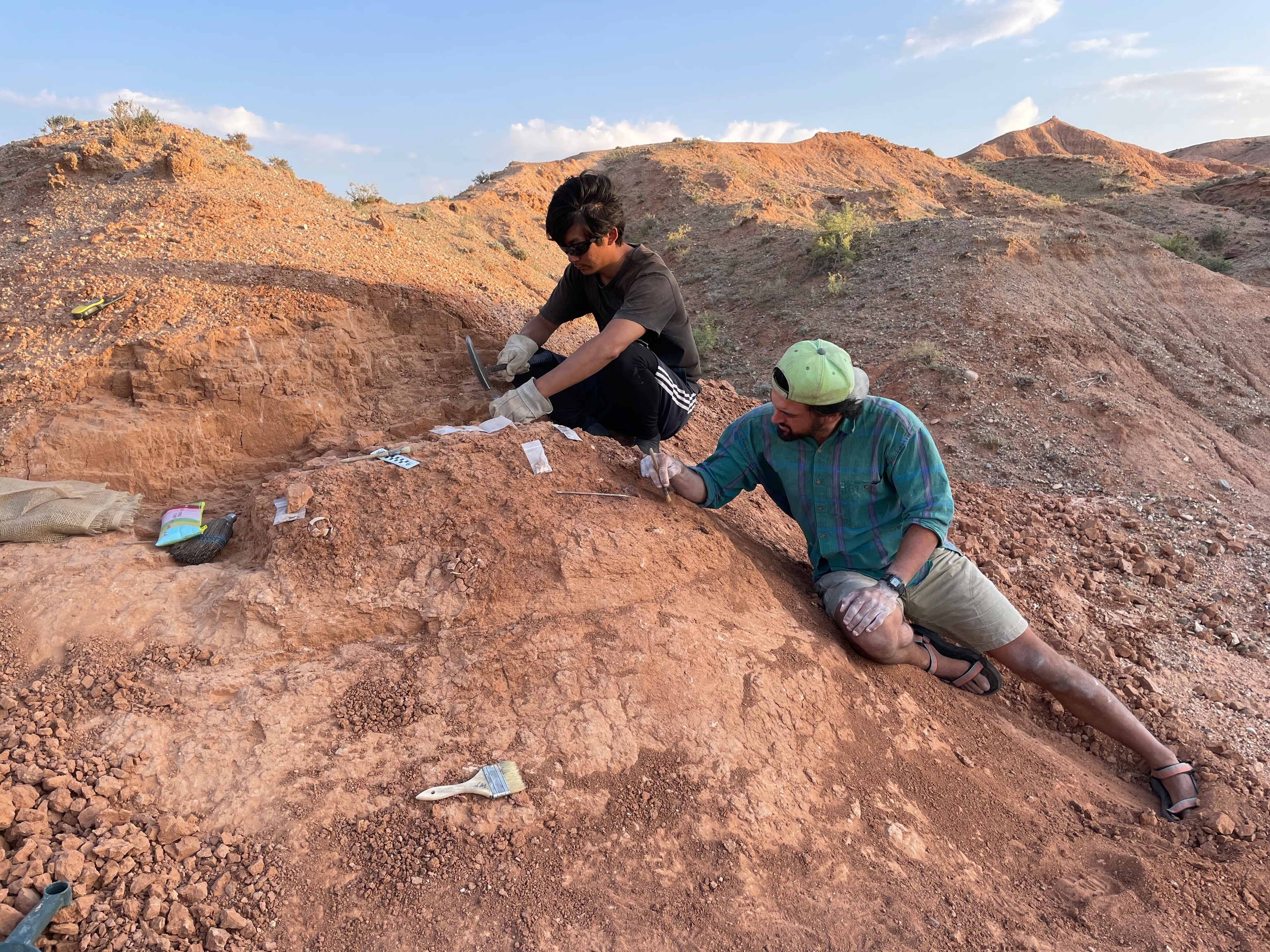World's Largest Dino Tracks Found in Real-Life 'Jurassic Park'
The dinosaur track sites, found in northwestern Australia, have long been treated as sacred by the local Aboriginal community.
More than 120 million years ago, a menagerie of dinosaurs small and large stomped their way across what’s now northwestern Australia.
That ancient ecosystem left remnants scrawled on tidal flats and swampy stretches of mud, which in time turned to stone. The coastlines of northwestern Australia’s Dampier Peninsula now bear thousands of dinosaur tracks. One 16-mile stretch of the coast, including a site called Walmadany, carries the tracks of 21 different types of dinosaur—making it the most diverse tract of dinosaur footprints on Earth. Among them are the biggest dinosaur tracks ever studied in detail.
"It is extremely significant, forming the primary record of non-avian dinosaurs in the western half of the continent and providing the only glimpse of Australia's dinosaur fauna during the first half of the Early Cretaceous Period," University of Queensland paleontologist Steven Salisbury said in a statement. "It's such a magical place—Australia's own Jurassic Park, in a spectacular wilderness setting."
Walmadany’s footprints are etched into what’s known as the Broome Sandstone, a rock formation between 127 and 140 million years old that makes up part of the Dampier Peninsula. Sailsbury says that the tracks include the only confirmed evidence of Australian stegosaurs, as well as some of the largest dinosaur tracks ever recorded: footprints of a long-necked sauropod that are nearly six feet long each.
Walmadany has long been revered by the Goolarabooloo, the area’s traditional custodians, as the track sites play a vital role in the region’s oral history. According to tradition, many of the tracks were left behind by Marala, a Dreamtime creator being also known as “Emu Man,” whose three-toed feet and tail feathers etched themselves onto the landscape. (Sites closely tied to Marala are rich with tracks of Megalosauropus broomensis, a species of meat-eating theropod dinosaur, and feather-like leaf impressions of extinct plants called bennettitaleans.)
"Marala was the Lawgiver. He gave country the rules we need to follow. How to behave, to keep things in balance," Goolarabooloo Law Boss Phillip Roe said in a statement.
In 2008, the Goolarabooloo worried that Walmadany was at risk, after Western Australia’s government tapped the site to host a $40-billion liquid natural gas processing plant. In short order, the Goolarabooloo contacted Salisbury and his colleagues, who then spent more than 400 hours along the coastline cataloging 150 different prints.
The work wasn’t easy. Salisbury and his colleagues had to navigate the coast’s notoriously intense tides, which can rise and fall more than 30 feet, as well as deal with the occasional shark and crocodile. But to protect a site of such cultural and scientific significance, the challenges were worth it.
"We needed the world to see what was at stake," said Roe.
After years of paleontological work—and protests—Walmadany was granted Natural Heritage status in 2011, protecting the tracks from harm. Two years later, the natural-gas project folded.
Now, Salisbury has unveiled his team’s scientific description of what he calls the “Cretaceous equivalent of Serengeti.” His study of Walmadany’s dinosaur footprints published on March 24 in the 2016 Memoir of the Society of Vertebrate Paleontology.





